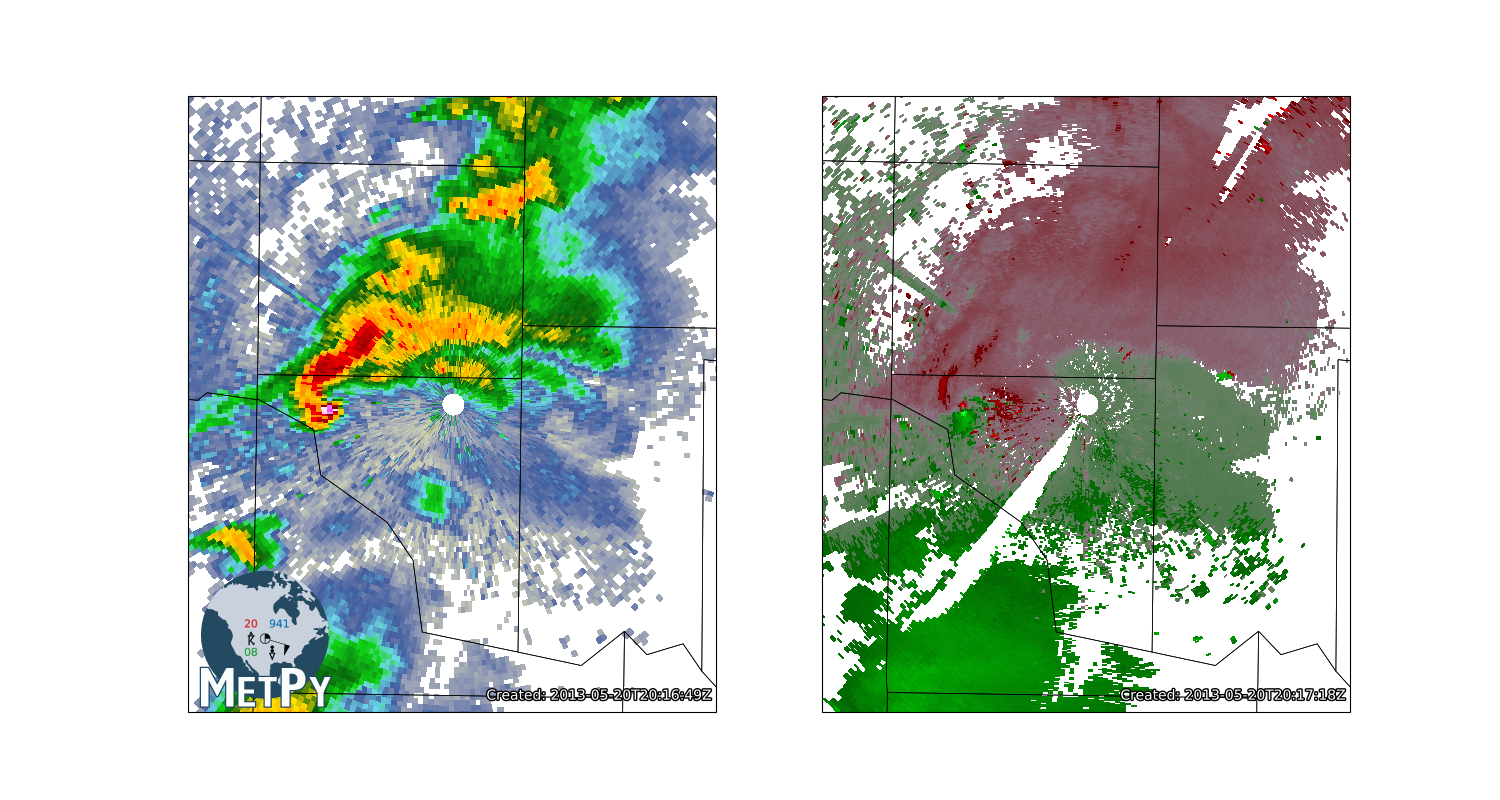Note
Click here to download the full example code
NEXRAD Level 3 File#
Use MetPy to read information from a NEXRAD Level 3 (NIDS product) file and plot
import cartopy.crs as ccrs
import matplotlib.gridspec as gridspec
import matplotlib.pyplot as plt
import numpy as np
from metpy.calc import azimuth_range_to_lat_lon
from metpy.cbook import get_test_data
from metpy.io import Level3File
from metpy.plots import add_metpy_logo, add_timestamp, colortables, USCOUNTIES
from metpy.units import units
spec = gridspec.GridSpec(1, 2)
fig = plt.figure(figsize=(15, 8))
add_metpy_logo(fig, 190, 85, size='large')
ctables = (('NWSStormClearReflectivity', -20, 0.5), # dBZ
('NWS8bitVel', -100, 1.0)) # m/s
for v, ctable, ax_rect in zip(('N0Q', 'N0U'), ctables, spec):
# Open the file
name = get_test_data(f'nids/KOUN_SDUS54_{v}TLX_201305202016', as_file_obj=False)
f = Level3File(name)
# Pull the data out of the file object
datadict = f.sym_block[0][0]
# Turn into an array using the scale specified by the file
data = f.map_data(datadict['data'])
# Grab azimuths and calculate a range based on number of gates,
# both with their respective units
az = units.Quantity(np.array(datadict['start_az'] + [datadict['end_az'][-1]]), 'degrees')
rng = units.Quantity(np.linspace(0, f.max_range, data.shape[-1] + 1), 'kilometers')
# Extract central latitude and longitude from the file
cent_lon = f.lon
cent_lat = f.lat
# Convert az,range to x,y
xlocs, ylocs = azimuth_range_to_lat_lon(az, rng, cent_lon, cent_lat)
# Plot the data
crs = ccrs.LambertConformal()
ax = fig.add_subplot(ax_rect, projection=crs)
ax.add_feature(USCOUNTIES, linewidth=0.5)
norm, cmap = colortables.get_with_steps(*ctable)
ax.pcolormesh(xlocs, ylocs, data, norm=norm, cmap=cmap, transform=ccrs.PlateCarree())
ax.set_extent([cent_lon - 0.5, cent_lon + 0.5, cent_lat - 0.5, cent_lat + 0.5])
ax.set_aspect('equal', 'datalim')
add_timestamp(ax, f.metadata['prod_time'], y=0.02, high_contrast=True)
plt.show()

Total running time of the script: ( 0 minutes 3.332 seconds)